Ultimate Guide: How to Start an Affiliate Marketing Business
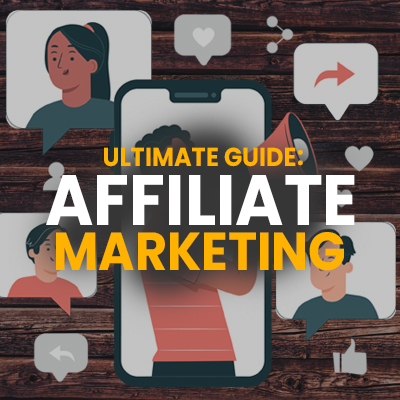
Starting an Affiliate marketing business is one of the most popular ways to make money online. And it can be a great way to earn a “semi-passive” income. I’ll explain the “semi” part in a while.
As a beginner, you may have questions about how it works and how much you can earn. This ultimate guide will explain everything you need to know on how to start an affiliate marketing business.
Think about it, what if you can start a business without the need to:
- Create or sell products yourself. As an affiliate, you simply promote other people’s products and earn commissions on sales.
- Manage inventory or deal with shipping and customer service. The merchant takes care of all of that for you.
- Invest a ton of money into the business. In fact, you can start with little to no money if you are willing to put in the time and effort to grow your affiliate business.
The best part about an Affiliate marketing business is that you can earn a semi-passive income stream.
By semi-passive I mean you can earn money even while you are sleeping. But, you’ll still have to actively create and manage the content for your affiliate marketing business to grow.
What is Affiliate Marketing?
Affiliate marketing is a triple-win business model where all parties, the business (or merchant), the affiliate marketer, and the customer, will benefit from a business transaction.
The business benefits as it does not need to pay hefty advertising fees to make a sale.
The affiliate marketer benefits from the sale where they earn a commission.
The customer benefits because of the strong recommendation and the trustworthiness of the affiliate marketer, making the customer feel comfortable about the purchase.
How Does Affiliate Marketing Work?
Affiliate marketing works by sharing the revenue generated from a sale between the merchant and the affiliate. For every sale generated through the unique affiliate link, the affiliate earns a commission.
Let me give you an example. In affiliate marketing, there are three core players:-
- The merchant (i.e. businesses, brands, or retailers)
- The publisher (also known as ‘the affiliate’)
- The customer
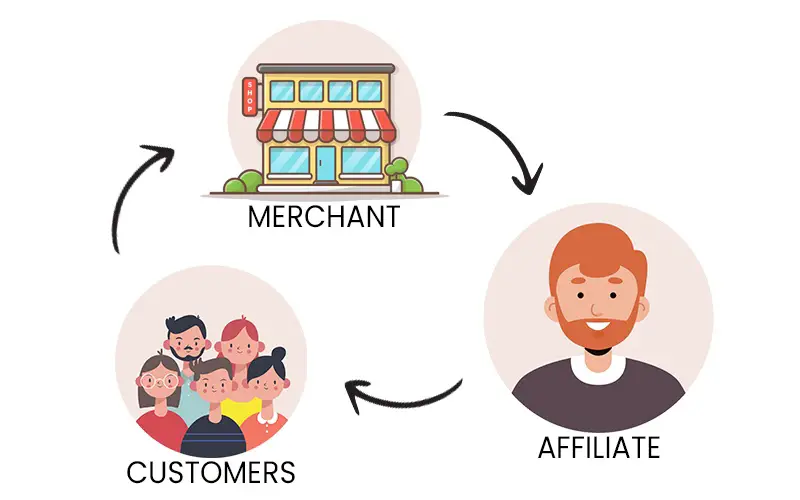
The process of how to make money with affiliate marketing can be summarized into 8 simple steps. Assuming ‘YOU’ are an affiliate marketer:
- You sign up for a merchant’s affiliate program
- The merchant provides you with a unique affiliate link (which contains your account’s ID)
- You create content or ads that target a specific group of audience (for example, people who are looking to buy an oven)
- A potential customer went online and saw your content (maybe through an advertisement, a YouTube video, or a search)
- The customer clicks on your unique affiliate link
- The customer is taken to the merchant’s site and makes a purchase
- The merchant processes the order and sends out the product
- The affiliate (YOU) gets paid a commission for the sale

What is an Affiliate Link?
To further elaborate on the unique affiliate link I’ve talked about, it is a special URL that contains the affiliate’s ID. This ID allows the merchant to track where the sales are coming from so they can pay the affiliate.
The affiliate link is commonly displayed as a button or banner on the affiliate’s website. When a customer clicks on this link, they are taken to the merchant’s site, and their ID is recorded.
If the customer purchases a product, the affiliate gets a commission for the sale. That’s how money is made with affiliate marketing.
The amount of the commission varies from merchant to merchant but is generally a percentage of the sale price.
I hope this is easy for you to understand.
How much can you make as an affiliate marketer?
How much you make as an affiliate marketer depends on a few factors such as:-
- The niche you are in
- The affiliate programs you join
- The products you are promoting
Most importantly, the effort you put into growing your affiliate business.
Other factors such as traffic to your site and conversion rates will also affect your earnings.
To give you an idea of how much affiliate marketers can earn, here are some real-life examples:-
- Carley Schweet, a personal blog in the self-care, motherhood, and lifestyle space reported an affiliate earning of $12,406 in June 2021.
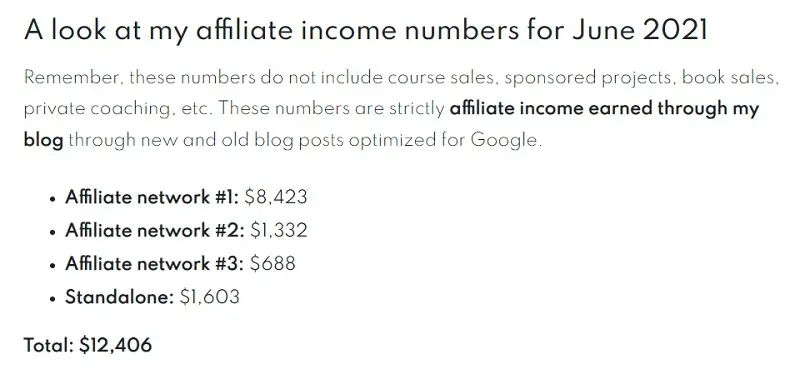
- This Online Word, a personal finance blog earned over $92,614 in 2021, of that, $30,806 came from affiliate marketing.
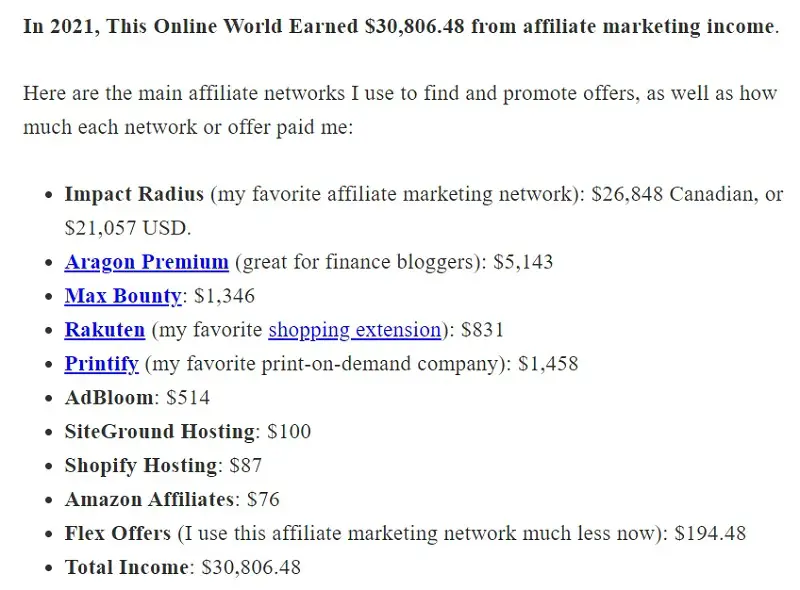
- Anil Agrawal from BloggersPassion, a personal blog in the blogging niche, reported affiliate earnings of $160,836 in 2021.
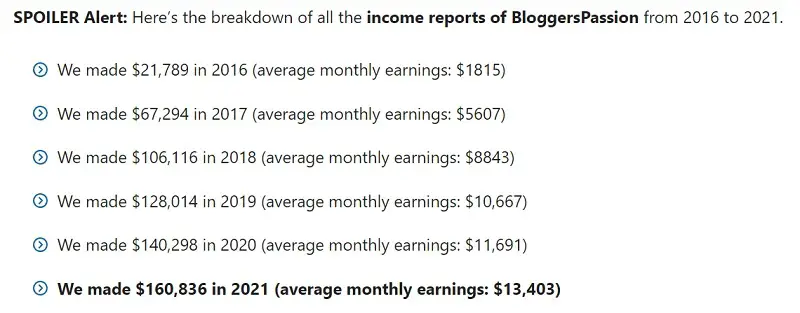
- Sayan Neogie from ProSmartrepreneur, a personal finance blog, reported earnings of $8,657 in January 2021, of which $4,619 came from affiliate marketing.
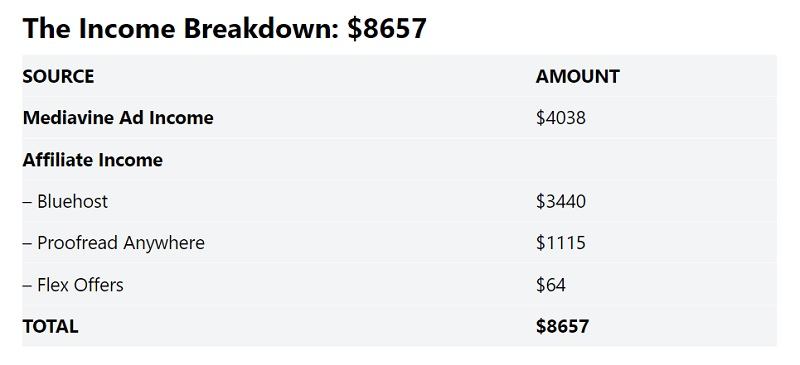
Of course, there are many other great examples out there, but these people are individuals, just like you and me, who started their affiliate marketing business a little earlier.
There is no one-size-fits-all answer to how much affiliate marketers can earn. It really depends on the niche they are in, the affiliate programs they join, and the products they are promoting.
So, if you’re serious about affiliate marketing and want to make a full-time income, treat it like a business. Invest time and effort into growing your affiliate business, and the earnings will follow.
Different methods of affiliate marketing
Now that you understand the basics of affiliate marketing, let’s take a look at some of the different methods you can use to generate traffic and sales.
Method 1: Social media marketing
You can use social media platforms like Facebook, Twitter, TikTok, and Instagram to drive traffic to your affiliate links.
To do this, you’ll need to create engaging content that resonates with your audience and includes your affiliate link.
For example, if you promote a cooking course, you could create a video recipe and include your affiliate link in the description.
Method 2: Blogging
Another great way to get traffic to your affiliate links is through blogging.
You can create blog posts around topics related to the products you are promoting. For example, if you promote a new type of kitchen appliance, you could write a blog post about healthy recipes that can be cooked in this appliance.
Make sure to include your affiliate link in the blog post so that readers can click through and purchase the product.
On top of affiliate revenue, there are many other methods of monetizing a blog; hence starting an affiliate blog is one of the highly recommended affiliate marketing methods.
Method 3: YouTube
YouTube is yet another great platform for driving traffic to your affiliate links.
Like an affiliate blog, there are many other methods for monetization, such as ad revenue, brand sponsorship, and more.
As long as you create videos around topics that resonate with a particular group of people and recommend products that could be helpful to your audience, you can be sure to make a significant income through affiliate marketing.
Method 4: Quora
Quora is a Q&A platform where people can ask questions about anything and everything.
You can use Quora to drive traffic to your affiliate links by answering questions related to the products you are promoting.
Not a popular option for affiliate marketing, but there are still a handful of people making a substantial amount from promoting products on Quora.
Just be sure not to sound salesy. You’ll be booted out of the platform.
Method 5: Social Media Ads
I’m pretty sure you have seen ads from Facebook, Instagram, TikTok, Twitter, and even Linkedin.
They offer you a chance to quickly reach out to a broad audience to promote your affiliate product offer, allowing you to earn commissions fast.
The downside is that you’ll have to pay advertising fees, and if your ad is not convincing enough, or you are promoting to the wrong audience, you may end up losing a lot of money.
How to Start an Affiliate Marketing Business (Step-by-step)
Great! Now that you know the key elements of affiliate marketing, let’s talk about the steps to get started.
Here are the steps you need to take:
1. Deciding on a Traffic Method
I’ll start with this because you need to understand your comfort level and attitude towards affiliate marketing. But, the thing that is certain is that there are no shortcuts to being successful in affiliate marketing.
Free Traffic Methods
If you decide on either of the first 4 methods we have discussed above; the initial monetary investment is low.
You’ll probably only need an affiliate marketing website.
However, you’ll have to make a consistent effort to create highly relevant and helpful content for the audience you are targeting.
With a consistent stream of great content, people will resonate with and feel comfortable buying a product through your affiliate link.
Paid Traffic Methods
The first thing you need to understand about paid traffic is that it requires a monetary investment.
You will have to pay for advertising, and there is no guarantee that you will make a profit. In fact, there is a high probability that you could lose money, especially if you are new to the concept of online marketing and copywriting.
With paid traffic, you need to be very careful with your targeting. If you are not targeting the right people or your ads are not resonating with your target audience, you will not make any sales.
Beginners will start with learning how to write ad copy (a skill called copywriting). Learning to write words that sell is partly art and science. They are always subjective and require lots of trial and error to make an ad profitable.
Even experts will spend about $1,000 to $5,000 to test and fine-tune their ad copies (testing one element at a time) to start seeing some profits.
How much do you think a beginner needs to spend to find one profitable ad campaign. Not forgetting some ad platforms dislike affiliate ads. I’ll leave it to you to think about it. If you think paid traffic is the way to go, awesome!
2. Research Your Competition
Researching your competitors will help you determine what strategies are working well for them and what areas you can improve upon.
This will also give you an idea of what products are selling well in your niche and what type of content is resonating with your audience.
Competitor research is an essential part of any marketing strategy, and affiliate marketing is no exception.
For Free Traffic Methods
Simply start by searching a keyword your target audience will search for on either Google or YouTube.
For example, if I want to promote a suitable microphone for a home studio, I would search for “microphones for home studio”.
From there, you will have a list of competitors. Take some time to visit their website (blog) or videos. See what type of content they are producing and which topics are getting the most engagement.
Most importantly, you want to see the types of affiliate programs that are available in the niche, and whether or not they are profitable.
Once you have identified that a niche is profitable, and you have an idea of how you are going to promote the affiliate products with content, you can proceed to the next step.
But, you have got to make sure that the niche you choose is something that you have knowledge about. That way you will have an advantage when it comes to creating quality content, which we will be talking about in a while.
For Paid Traffic Methods
If you have decided to run ads on Facebook, you can utilize the Facebook Ads Library to see the current active ads.
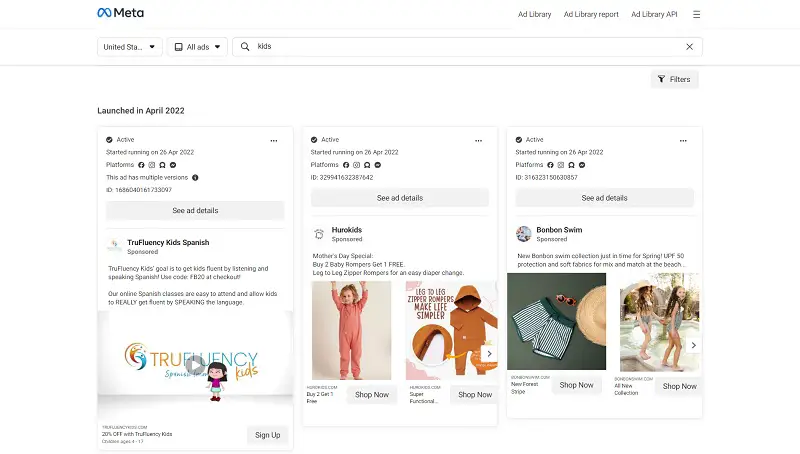
You can start by selecting a location, and adding a keyword or an advertiser (if you know one). The Facebook Ads Library will present you with ads that are currently active based on the conditions you have set.
If you have decided to run your advertising campaigns on TikTok, you can leverage their ads library as well.
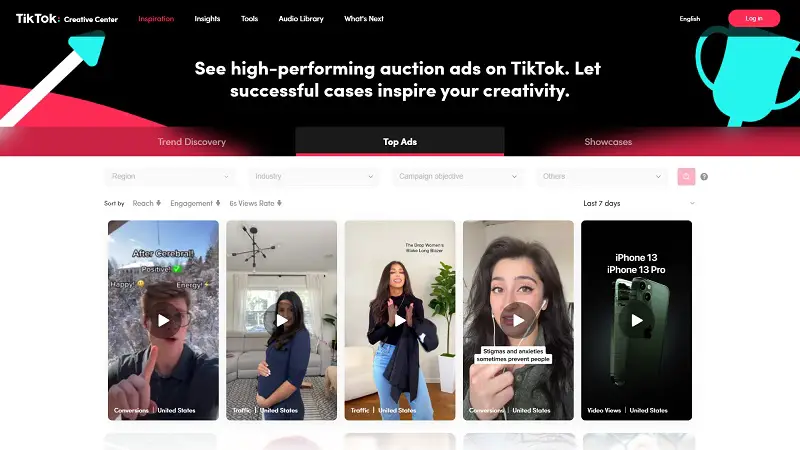
Studying the ad copy, its landing page, the tone of advertising (being salesy, genuine, professional, etc.).
Basically, the entire sales funnel from why somebody will click on the ad, why and how the ad is relevant to the audience, what makes people want to learn more about the product, and finally, what makes people want to buy the product.
These are the things you want to learn from other advertisers for your ad campaigns to be profitable in the shortest time possible, with as little money invested.
3. Join affiliate programs
After doing your research, it’s time to join some affiliate programs. This is where you’ll be able to find products to promote and earn commissions on.
There are a few different places you can find affiliate programs:
- The merchant’s website: Most merchants will have an affiliate program listed somewhere on their website.
- Affiliate networks: These are websites that connect affiliates with merchants. Some of the most popular affiliate networks include Clickbank, ShareASale, and Rakuten.
- Social media platforms: Many social media platforms have their own affiliate programs now, such as Amazon Associates, Instagram, and YouTube.
Different Types of Affiliate Marketing Programs
Now that you know where to find affiliate programs, let’s talk about the different types of affiliate programs that are available.
1. High-Paying, Low-Conversion Affiliate Programs
As the name suggests, high-paying, low-conversion affiliate programs offer affiliates a higher commission, but due to the high price of the product (expensive), the conversion rate may be lower than that of a cheaper product.
These products are usually non-tangible or do not require huge overheads in production, such as online courses, web hosting, Saas services, etc.
Affiliate programs like the Liquid Web Affiliate program pay their affiliates up to $7,000 per sale of their dedicated hosting plan, but such a sale is hard to come by.
The most expensive hosting plan, which pays up to $7,000 in commission, cost almost $1,000 per month. Here are some high paying web hosting affiliate programs.
Not all businesses and websites need such an expensive hosting plan. Probably only big enterprises will need such services, and they may contact Liquid Web directly instead of clicking on an affiliate link.
Plus, with such attractive commissions, there’ll definitely be a high level of competition. However, it depends on the niche you are in.
2. Low-Paying, High-Conversion Affiliate Programs
Low-paying, high-volume affiliate programs are the opposite of high-paying, low-volume affiliate programs.
They offer affiliates a lower commission, but because the product is cheaper, more people are receptive to buying the product.
These products are usually tangible, meaning physical products. An example would be products commonly sold on platforms like Amazon, Target, Walmart, etc.
Amazon pays 4.5% on Kitchen products, so if somebody bought a $19 knife through my affiliate link, I’d receive $0.85 worth of commission.
However, places like Amazon do not only award a single sale; it rewards based on the entire purchase value. So, if the same person bought a blender that cost $99 under the same category, I will be rewarded with $5.31 (($99 + $19) x 4.5%).
To make a substantial income from this type of affiliate program, you’ll need a large traffic volume.
3. High-Paying, High-Conversion Affiliate Programs
As you might have guessed, high-paying, high-conversion affiliate programs offer affiliates a higher commission rate and appeals to the masses.
These products include insurance, home loans, credit cards, etc. Everyone needs insurance, and some insurance companies offer to pay their affiliates monthly recurring commissions up to a certain number of years.
As the number of customers you refer to the merchants increases, you can quickly see your monthly paycheck steadily growing.
Which affiliate programs should you choose?
For Free Traffic Methods
Now that you know the different types of affiliate programs, it’s time to choose which one is right for you.
If you’re just starting, you may want to choose a low-paying, high-conversion affiliate program to get your feet wet and learn the ropes.
Once you’ve gained some experience, you can start promoting high-paying, low-volume affiliate programs.
And, if you’re feeling ambitious, you can even try your hand at high-paying, high-volume affiliate programs.
No matter which type of affiliate program you choose, always remember to do your research so that you can find programs that are a good fit for you and your website.
For Paid Traffic Methods
It really depends on the Return on Investment you are looking for. If you promote low-paying, high conversion affiliate programs, you’ll probably end up with a loss.
That’s because you have to factor in the advertising costs.
Imagine you are promoting a $19 product and you get paid $0.85 worth of commission per sale. And, it costs $5 of advertising fees to make 1 sale (1 paying customer), then you would have made a loss of $4.15.
It is not worth promoting such products at all!
So, suppose you intend to promote affiliate products using paid advertising methods. In that case, you should be looking at promoting the other two types of affiliate programs for it to be worthwhile.
But, make sure that you completely understand your target audience so that you can match their needs to the product benefits.
Where to find affiliate programs?
I’ll list some of the most common affiliate networks, which are hubs to many individual affiliate programs.
But I’ll say this, some of the most lucrative affiliate programs are privately managed, and you can simply find them by doing a search on Google with this parameter “Niche + Affiliate Programs”.
4. Create content
Now that you know what affiliate programs to join, it’s time to create content.
As mentioned earlier, you need to have some form of expertise in the niche in order to offer some valuable insights to your audience.
For free traffic methods
The key to winning in affiliate marketing with free traffic methods is to be consistent with your content creation. With consistency, you build authority and trust, and your audience will be much more receptive to your ideas and recommendations.
The recommendation comes in the form of product reviews.
It’s important that you only write genuine reviews of products you’ve actually used. Don’t be tempted to write fake reviews in an attempt to make more sales – this will only damage your reputation in the long run.
If you’re not sure how to write a genuine review, here are some tips:
- Be honest about both the positives and negatives of the product
- Write in your own voice, and be genuine about your experience
- Don’t try to force a sale, let the reader decide for themselves
By following these tips, you’ll be able to write genuine, helpful reviews that will actually convert readers into buyers.
For paid traffic methods
To effectively create affiliate ads on social media platforms like Facebook, it is essential to learn the skill of copywriting.
Copywriting is the art of creating persuasive, compelling, and interesting content that will encourage people to take a desired action, such as clicking on an ad or making a purchase.
While creating well-written and attention-grabbing content can be a challenge, it is worth taking the time to learn this skill as it can significantly improve the effectiveness of your affiliate ads.
Some basic copywriting tips include using strong headlines, active voice, and specific statistics and benefits.
By following these tips, you can craft ads that are more likely to grab people’s attention and convince them to click through to your affiliate link.
5. Getting clicks to your affiliate links
Link Placement
Where you put your links can make a big difference in how often they’re clicked.
For example, if you’re writing an article, putting your links at the top or bottom of the piece can help them get more clicks than if they’re buried in the middle.
You can also try making your links stand out from the rest of your content by using a different color or font.
Congruency
In order to be an effective affiliate marketer, it is important to be congruent in your message.
This means that the products or services you promote should align with the overall theme of your affiliate blog or ad copy.
For example, if you have a blog about healthy eating, you would not want to promote fast food restaurants. Likewise, if you have a blog about frugal living, you would not want to promote luxury brands.
By promoting products or services that are consistent with your theme, you will create a more cohesive brand and be more likely to convert visitors into customers.
Make affiliate links standout
I’m pretty sure you would agree that it’s important to make affiliate links stand out from the rest of the content on your page.
So, one way to do this is to use web elements such as buttons, tables and boxes.
By using these elements, you can highlight your affiliate link and make it more visible to potential customers.
Additionally, you can use color and typography to draw attention to your affiliate link further.
By taking these steps, you can ensure that your affiliate link stands out from the rest of the content on your page.
6. Track your results
Finally, it’s important to track your results so you can see what’s working and what’s not.
There are a few different metrics you’ll want to keep an eye on:
- Traffic
- Engagement
- Conversions
- Sales
By tracking these metrics, it’ll give you insights as to what’s working and you can make necessary changes to your strategy.
For Affiliate Blogs
As an affiliate blogger, it’s important to track above metrics because it can help shape your content creation strategy.
For example, if you see that your blog posts are getting a lot of traffic but not generating many sales, you may want to focus on creating more targeted content that is more likely to lead to conversions.
Alternatively, if you see that your blog posts are getting very little traffic, you may want to consider creating more shareable content or promoting your blog more aggressively.
By tracking these metrics, you can ensure that your content creation strategy is aligned with your business goals.
For Social Media Content
Engagement isn’t just a vanity metric. By understanding how engagement impacts other metrics such as conversion and sales, creators and influencers can shape their content strategy to maximize ROI.
For example, if an influencer notices that their videos generate significantly more engagement than their photos, they may want to focus on creating more video content.
On the other hand, if they notice that their audience is highly engaged with a particular type of content but isn’t converting at a high rate, they may want to consider changing their approach.
By tracking metrics and studying the data, creators and influencers can better understand what type of content resonates with their audience and drives results.
For Paid Advertisements
By understanding how these metrics are affected by the ad copy, businesses can make adjustments to improve the profitability of their ads.
For example, if an ad isn’t getting much engagement, it might be due to a lack of relevance. In this case, shaping the ad copy to be more targeted toward the audience can increase engagement and conversions.
Similarly, if an ad has a high conversion rate (high click-through rate), but low sales, adjusting the copy to focus on the benefits of the product can lead to more sales.
Tracking metrics can be time-consuming and complex, but the insights gained from doing so can be invaluable in helping businesses improve their bottom line.
That’s it! These are the steps you need to take to start your own affiliate marketing business. Just remember to be patient, be resilient, work hard, and track your results, and you’ll be on your way to success.
Final Thoughts
I hope this guide on how to start affiliate marketing for beginners has given you the sufficient information to choose the right path.
If you are totally new, and you know nothing about online marketing, then a good place to start is to join some affiliate marketing courses.
But prior to that, you’ve got to know if the paid traffic methods or the free traffic methods is more suitable.
Free Traffic Method (Key: Consistency)
- Cost: Low initial cost
- Attribute: Labor intensive
- Growth: Steady growth
- Risk: Time & Effort
Paid Traffic Method (Key: Master Copywriting)
- Cost: High initial cost
- Attribute: Skills centric
- Growth: Exponential growth
- Risk: Monetary, Time & Effort
The overarching rule of starting an affiliate marketing business is to expect slow or no monetary growth at the start. It is through consistency and honing of skills that will bring you to where you want to be in your affiliate marketing journey.
Awesome! Have a Great Day! Hope affiliate marketing works for you.
